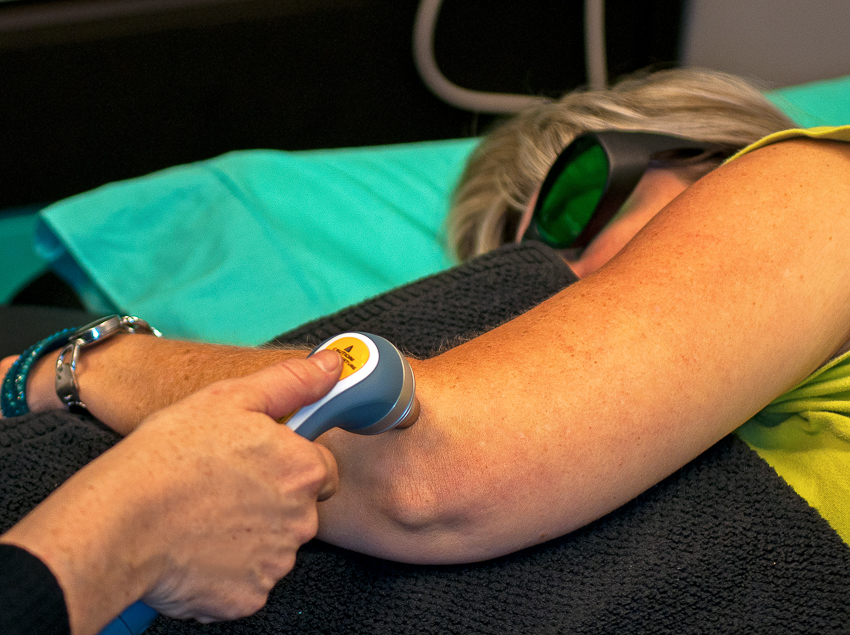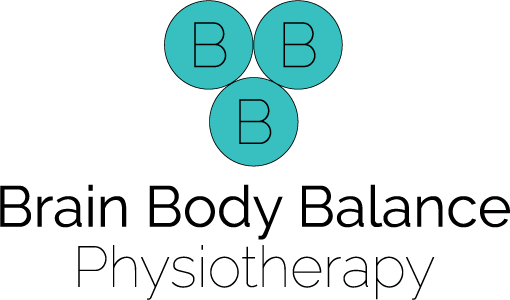Laser
(Light Amplification by the Stimulated Emission of Radiation)

Protective glasses are worn by both patient and therapist.
There is strong research evidence that LASER can help with nerve repair and decrease neuropathic pain in peripheral nerve injury. There is also research evidence to support the use of LASER in the treatment of neck pain, fracture healing, osteoarthritis, Achilles tendinopathy, carpal tunnel syndrome, trigger points, tennis elbow, plantar fasciitis and frozen shoulder.
LASER can be used independently or in conjunction with other treatment modalities.
LASER can be used independently or in conjunction with other treatment modalities.

The wavelengths used for LASER range from 600-1000nM (visible and near infrared bands of the electromagnetic spectrum).
LASER provides enhancement of particular properties of light energy.
Light is made up of photons. Photons may be reflected by the skin, absorbed by the skin or blood, diffusely scatter during penetration and/or transmit to deeper tissue layers. Starving cells are more photosensitive than well fed ones so damaged tissue will absorb more photons.
Photons are absorbed by molecules called chromophores, present in the blood, mitochondria and cellular membranes. Chromophores that absorb these photons assume a stimulated state and contribute to chemical reactions such as increasing ATP (an energy source for cells) production. Damaged tissue has a reduced ability to produce ATP so LASER helps to remedy this.
LASER can penetrate up to 5cm depending on its wavelength. Deeper and more distant effects can be produced via chemical changes that cause a chain reaction. LASER reduces nerve excitability, particularly ‘C’ fibres which convey danger messages. Reduced nerve excitability reduces peripheral sensitisation. This can not only decrease pain but also lessen the likelihood of acute pain becoming chronic.
- Reduction in inflammation
- Improved circulation
- Improved and accelerated tissue repair
- Relief of muscle spasm
- Improved lymphatic function (helps reduce swelling)
There is no detectable temperature rise in the tissues from LASER treatment as the thermal energy is non accumulative in nature.
There is no macroscopically visible change in tissue structure after LASER treatment.
LASER provides enhancement of particular properties of light energy.
Light is made up of photons. Photons may be reflected by the skin, absorbed by the skin or blood, diffusely scatter during penetration and/or transmit to deeper tissue layers. Starving cells are more photosensitive than well fed ones so damaged tissue will absorb more photons.
Photons are absorbed by molecules called chromophores, present in the blood, mitochondria and cellular membranes. Chromophores that absorb these photons assume a stimulated state and contribute to chemical reactions such as increasing ATP (an energy source for cells) production. Damaged tissue has a reduced ability to produce ATP so LASER helps to remedy this.
LASER can penetrate up to 5cm depending on its wavelength. Deeper and more distant effects can be produced via chemical changes that cause a chain reaction. LASER reduces nerve excitability, particularly ‘C’ fibres which convey danger messages. Reduced nerve excitability reduces peripheral sensitisation. This can not only decrease pain but also lessen the likelihood of acute pain becoming chronic.
Effects of LASER (may last for hours to days) :
- Pain relief- Reduction in inflammation
- Improved circulation
- Improved and accelerated tissue repair
- Relief of muscle spasm
- Improved lymphatic function (helps reduce swelling)
These effects can assist in creating a window for other treatments to be more effective
.There is no detectable temperature rise in the tissues from LASER treatment as the thermal energy is non accumulative in nature.
There is no macroscopically visible change in tissue structure after LASER treatment.

